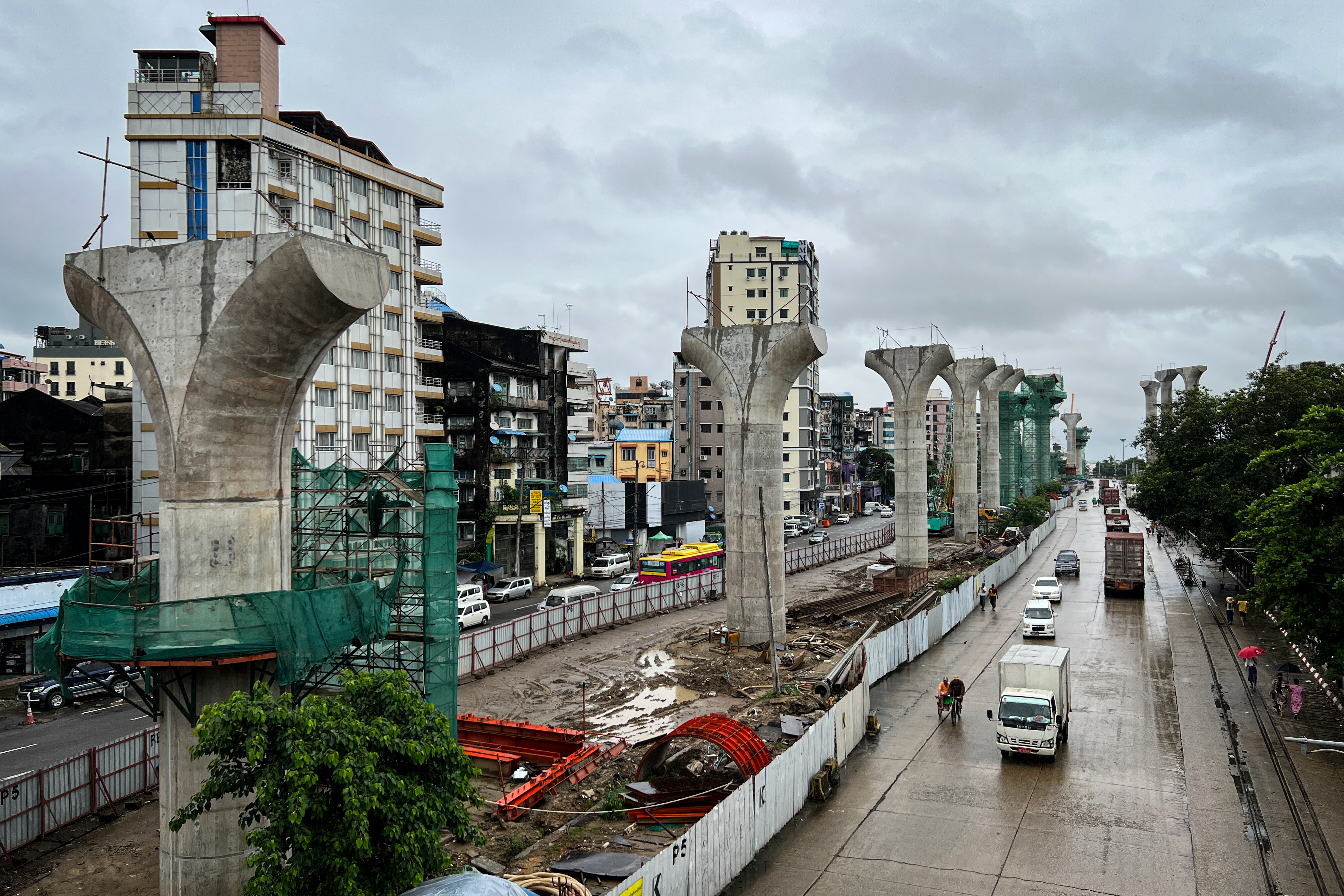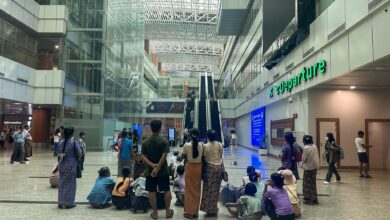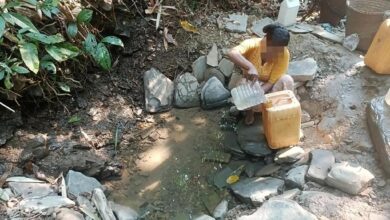
Min Aung Hlaing, the leader of Myanmar’s coup regime, likes to boast at meetings that in the first year of his administration, the country achieved a trade surplus of $600 million, even as, according to the World Bank, its economy contracted by 18%.
He also likes to criticise the two previous quasi-civilian governments that oversaw the so-called triple transition to democracy, peace, and economic structural transformation for allowing the country to run up a trade deficit of almost $25billion over a decade.
His logic of equating a trade surplus with strong economic performance may show his economic illiteracy, or it might be his way of trying to cover up his mismanagement of the economy and the cost of his coup to the society at large. Either way, it does not bode well for the country’s prospects under his rule.

As Michael Pettis, a professor of finance at Peking University and senior fellow of the Carnegie Endowment’s China Program, explains, trade deficits can be counterbalanced by financial account surpluses, which can be allocated to productive investments or to support household consumption.
According to Pettis, productive investments such as infrastructure projects create employment opportunities, but household consumption can lead to unsustainable debts and increasing unemployment.
Net Export (Export-Import) = Saving – Investment
(-) $25billion = Low Saving – (Positive Growth of) Investment (FDI, ODA, Public/Private)
According to this formula, Myanmar’s trade deficit of $25billion between 2011 and 2020 must have been balanced by foreign direct investment (FDI) or a financial account surplus of that amount as foreign currencies came into the country. Otherwise, Myanmar would have had a balance of payment crisis, as it had a perennial trade deficit.
With increased FDI, import of capital goods for investment projects such as electricity generation, telecommunications, and hotels increased, and that led to trade deficits. But these investments increased the productivity of the manufacturing and services sectors and created job opportunities for hundreds of thousands of people. That’s why Myanmar achieved an average GDP growth rate of 7% between 2011-2017 and was considered the most promising frontier market in Southeast Asia during this period.

After the February 2021 coup, however, FDI declined dramatically as foreign companies withdrew from or suspended investments in Myanmar. As a low-savings country, the trade deficit was no longer sustainable, so the regime that seized power had to tighten imports or face a balance of payment crisis and foreign reserve shortage like that currently gripping Sri Lanka.
No one knows the exact amount of foreign reserves the junta inherited from the ousted civilian government, but it is believed to be around $6 billion—enough to cover about four months of imports. It’s also unclear if this amount includes $1billion in US Treasury bills that have been frozen since the coup. What is clear is that the regime managed to turn the trade deficit into a surplus between October 1, 2020 and September 30, 2021, even as total trade declined by more than $6billion during this period.
(+) $600 million = Lower Saving – (Negative Growth of) Investment (FDI, ODA, Public/Private)
To avoid a balance of payment crisis and prevent foreign reserves from falling to an unsustainable level, the junta started imposing import restrictions in April 2021, beginning with a ban on soft drinks and passenger car imports. Since then, the percentage of products that require import licenses has increased from 35% to more than 82% as of March 2022.
As a further measure to ensure that exports exceed imports, the junta-controlled Ministry of Commerce has also set quantity limits on imported goods. Now, when applying for licenses to import consumer goods, the invoice price must not exceed $50,000.
The regime now finds itself performing a very delicate balancing act as the economy continues to deteriorate under the combined effect of a banking crisis, the lingering impact of the Covid-19 pandemic, and ongoing political instability.
One measure of the scale of the challenges it faces is the dramatic rise in unemployment and poverty since the coup. Due to a reduction in business activity, the suspension of projects funded by official development assistance, and lower government expenditures on infrastructure investment, Myanmar shed an estimated 1.2 million jobs in the wake of the military takeover, according to the International Labour Organisation. This, in turn, has led to a doubling of the poverty rate, from 26% to almost half of the population.
While the junta can control imports to some extent, it cannot prevent fiscal deficits from widening as revenue shortfalls increase and recurrent account expenditures make up the lion’s share of the government’s budget. The fiscal deficit for fiscal year 2021 was estimated at 9.5% (8.88 trillion kyat), while in the 2022 mini-budget it was 5.2% (3.8 trillion kyat). In the current fiscal year, it is 6.7% (7.4 trillion kyat).
It also cannot control capital outflows resulting from FDI and portfolio investments leaving the country.

In its latest report on Myanmar, released in July, the World Bank estimated that the foreign reserves held by the Central Bank of Myanmar (CBM) fell nearly $1billion in the quarter that ended in September 2021. It added that a nearly two-thirds decline in FDI compared to the previous year, as well as sharp reductions in other investment flows and substantial outflows of foreign currency deposits, were putting the country under mounting financial pressure.
As a result, the national currency, the kyat, depreciated by 47.5% between the beginning of the year and October 2021, according to the World Bank. In a bid to prevent a further decline in its value, the CBM issued directives that relied on financial repression to control foreign currency outflows.
These measures include forced conversion of 100% of exporters’ foreign currency earnings at the official CBM exchange rate, which is almost 35% below the market rate. (This has since been changed to 65% at the CBM rate and 35% at the market rate.) This had the effect of suppressing the domestic prices of grain exports.
Knowing that past rice and petroleum price increases have led to mass unrest, the regime has been careful to do what it can to control inflation. However, at a time when global food, fertilizer, and petroleum prices have been rising steadily, there are definite limits to what it can achieve.
Among the measures it has taken is the formation of a Foreign Exchange Supervision Committee to channel foreign exchange sales to priority imports such as petroleum, cooking oil, and fertilizer, and forced conversion at the CBM rate so as to suppress rising commodity prices.
However, these measures have proven to be ineffective due to underlying structural conditions. This was indicated recently when the Ministry of Commerce announced in the Global New Light of Myanmar that in the first seven months of the current fiscal year, Myanmar’s trade deficit was more than 678 million kyat—a sign of a looming balance of payment crisis.
Myanmar is an import-dependent country. For its garment and food/beverage industries, it has to import intermediate goods and agricultural inputs, without which its manufacturing sector will grind to a halt.
Factoring in public debt repayments of $1.4 billion since the coup and last year’s $1billion fall in reserves, we can only assume that Myanmar’s ability to pay for imported goods is rapidly diminishing. We also don’t know if the private sector has been servicing its debts, or whether it continues to send money out of the country.
While much remains uncertain, it is clear that Myanmar is heading for trouble. Perhaps aware of this fact, Min Aung Hlaing has been urging people to reduce their consumption of petroleum, cooking oil and electricity as much as possible.
It is unlikely, however, that this will do more than merely delay the onset of disaster. One way or the other, a reckoning is coming, and it may come soon.
Leo Min is an analyst focusing on macroeconomic policies and political economy in Myanmar.



